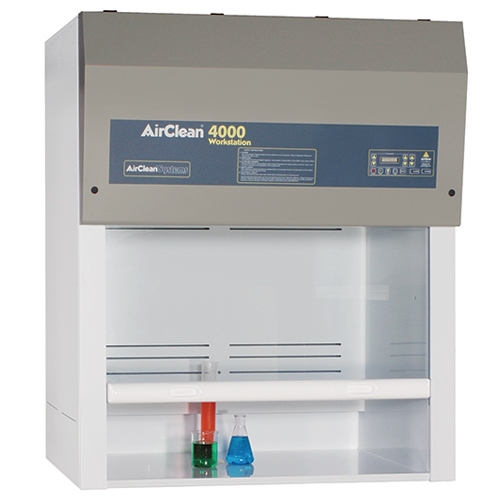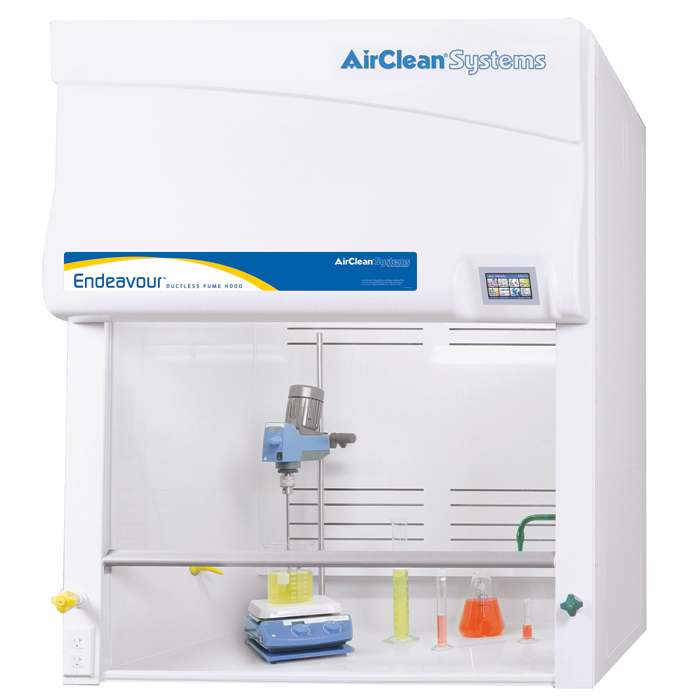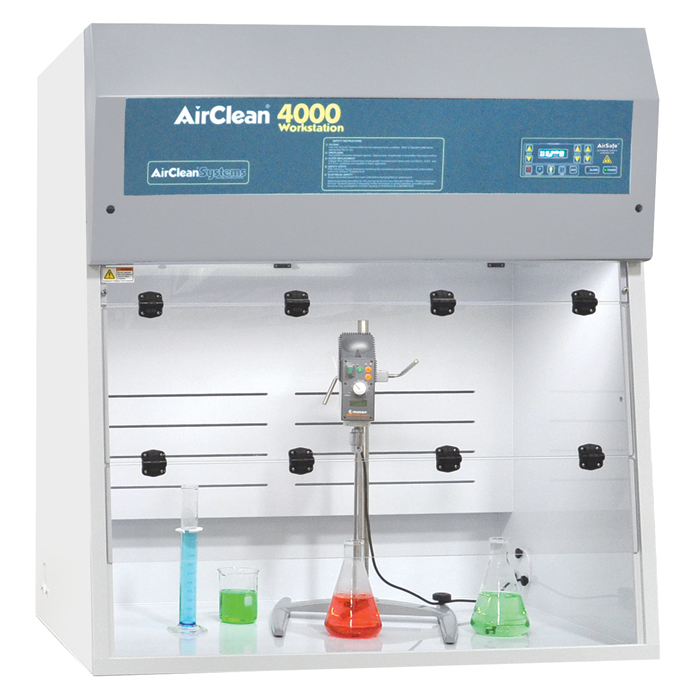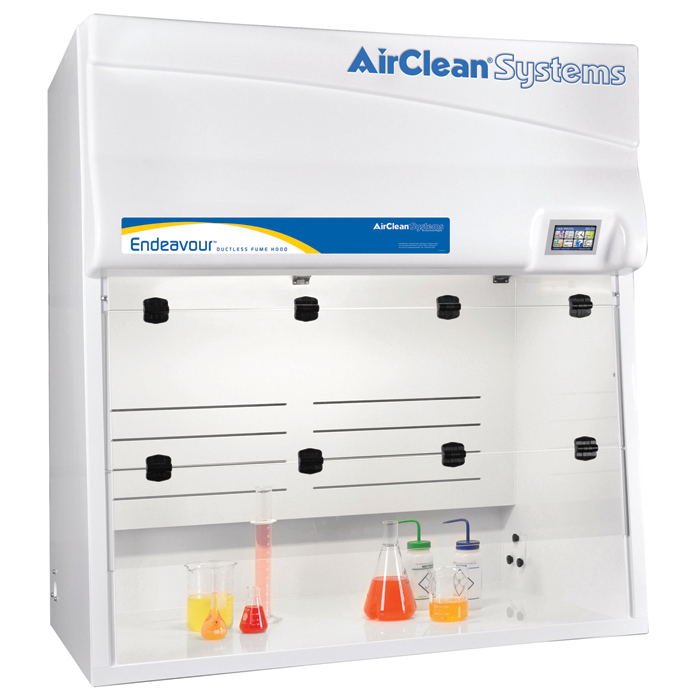Gas Phase Bonded Carbon Filtration

AirClean® Systems bonded carbon filters provide for a predictable and reliable gas phase filtration solution
AirClean® Systems manufactures bonded carbon, hybrid, and multi-layered filters that are available with standard carbon or chemically impregnated carbon for increased load capacity. Our bonded carbon filters minimize carbon dust found in traditional granular carbon filters. In some cases carbon dust, when chemically impregnated, may be more hazardous to the operator than the chemical being contained. We recognized this "flaw" in granular carbon filter design and eliminated it by holding the carbon in a predictable matrix with our proprietary bonding process.
Activated Bonded Carbon Filters
Gas phase coconut shell carbon filters utilize our unique bonded carbon filtration media. This minimizes potentially hazardous carbon dust found in traditional granular carbon filters. Our proprietary bonding process holds carbon in a predictable matrix, preventing carbon shift that can lead to "dead spots" common in traditional granular filters.
| Filter Type | Application |
|---|---|
| ACF100 | General purpose filter for Hydrocarbons, Organic Vapors, Some Acids, Esters, Sulphur Compounds, Hydrogen Compounds, Solvents and Odor |
Activated Bonded Carbon Chemisorptive Filters
These filters are impregnated with a chemical additive which helps the adsorption process by chemically or physically reacting with the toxic contaminant.
| Filter Type | Application |
|---|---|
| ACFGLT | Glutaraldehyde and Formaldehyde |
| ACFFOR | Formaldehyde |
| ACF300 | Ammonia or Amines |
| ACF350 | Alkaline Fumes |
| ACF400 | Inorganic Acids |
| ACF410 | Hydrogen Sulphide |
| ACF430 | Mercury Vapors |
| ACFMULTI | Multi-layered composite filter for Aldehydes, Acids, and General Organic Solvents |
Filter Adsorption Index
The ACF100 is a general purpose bonded carbon filter that can be used for a range of chemicals. The index below is intended as a guide to approximate how much of the toxic contaminant the filter may adsorb. At a filter weight of 22 lbs. (10 kg), and the index of "1", up to 50% or 11 lbs. (5 kg) of the toxin may be adsorbed within the filter. The index does not indicate the filtration efficiency, but the approximate weight of the contaminant that may be adsorbed within the filter. In general an index of "1" or "2" is a good indication of the filter’s suitability for use with that specific chemical. If another type of filter would be more appropriate, it has been indicated in parentheses in the partial chemical listing that follows.
| Acids | ||
|---|---|---|
|
1. Acetic 1. Acetic Anhydride 1. Acrylic 1. Butyric 1. Caprylic 1. Carbolic 2. Formic (ACF400)* 1. Lactic 1. Palmitic |
1. Phenol 1. Propionic 1. Valeric 1. Phenic 4. Phosphoric (ACFGLT)* 3. Formic (ACF400)* 2. Acetic 2. Propionic |
3. Methacrylic (ACF400)* 1. Oxalic 4. Sulfuric (ACF400)* 4. Nitric (ACF400)* 4. Hydrochloric (ACF400)* 3. Hydrobromic (ACF400)* 1. Caprylic 1. Carbolic |
| Alcohols | ||
|---|---|---|
|
1. Ethyl 1. Amyl 1. Butyl 1. Cyclohexanol 1. Isopropyl 1. Methanol (Methyl) |
1. Propyl 2. Ethanol 2. 1-Propanol 2. 2-Propanol 3. Allyl Alcohol 2. 1-Butanol |
2. 2-Butanol 2. Isobutyl Alcohol 1. Amyl Alcohol 1. Benzyl Alcohol |
| Amines | ||
|---|---|---|
|
4. Methylamine (ACF300)* 3. Ethylamine (ACF300)* 3. Isopropylamine (ACF300)* |
4. N-Propylamine (ACF300)* 3. Cyclohexylamine (ACF300)* |
3. Dimethylamine (ACF300)* 4. Benzidine (ACF300)* |
| Esters | ||
|---|---|---|
|
1. Butyl Acetate 1. Cellosolve® Acetate 1. Ethyl Acetate |
1. Ethyl Acrylate 2. Ethyl Formate 1. Isopropyl Acetate |
2. Methyl Acetate 1. Methyl Methacrylate |
| Ethers | ||
|---|---|---|
|
1. Amyl 1. Butyl 1. Cellosolve® 1. Dioxane 2. Ethyl |
2. Isopropyl 1. Methyl Cellosolve® 2. Methyl 1. Propyl 2. Methyl Ether |
2. Ethyl Ether 2. Vinyl Ether 1. Ethylene Glycol Monobutyl |
| Hydocarbons | ||
|---|---|---|
|
1. Benzene 1. Napthalene 1. Styrene Monomer® 1. Toluene 1. Toluidine 1. Xylene 4. Acetylene |
2. Isobutane 2. Butylene 3. Butadiene 1. Cyclohexane 3. Hexylene 2. Pentane 3. Propane |
2. Propylene 4. Ethylene 1. Cyclopentane 1. Hexane 1. Octane 1. Ethyl Benzene 1. Pyrene |
| Ketones | ||
|---|---|---|
|
1. Methyl Isobutyl Ketone 1. Methyl Ethyl Ketone 1. Dipropyl Ketone 1. Diethyl Ketone 3. Ketene 2. Acetyl Acetone 2. Methyl Propyl Ketone |
2. Methyl Isopropyl Ketone 1. Diethyl Ketone 2. Methyl Butyl Ketone 2. Methyl Isoamyl Ketone 1. Dipropyl Ketone 1. Ethyl Butyl Ketone |
1. Methyl Amyl Ketone 1. Ethyl Amyl Ketone 2. Isophorone 2. Methyl Isobutyl Ketone 2. Acetone 1. Cyclohexanone |
| Nitrogen Compounds | ||
|---|---|---|
|
2. Ammonium Acetate |
2. Ammonium Chloride (ACF300)* |
1. Ammonium Hydroxide (ACF300)* |
| Nitrogen Compounds | ||
|---|---|---|
|
1. Adhesives 1. Animal odors 1. Camphor 4. Carbon Monoxide 4. Carbon Dioxode 1. Citrus fruits 1. Cooking odors 1. Degreasing solvents 2. Deodorizers 1. Detergents 1. Hospital odors |
1. Human odors 1. Leather 1. Ozone 1. Nicontine 1. Perfumes 1. Petrol 1. Putrefying odors 1. Putrescine 2. Products of incomplete combustion |
1. Plastic 1. Poultry odors 1. Rancid oils and fats 1. Resins 1. Rubber 1. Stale odors 1. Odors from stables 1. Tar odors 3. Tobacco smoke 1. Toilet odors 1. Turpentine 1. Varnish 1. Vinegar 2. Wood Alcohol |
*Using impregnated filter indicated in parenthesis improves adsorption index to "1".
>>> Information about HEPA and ULPA Mechanical filtration can be found here.



